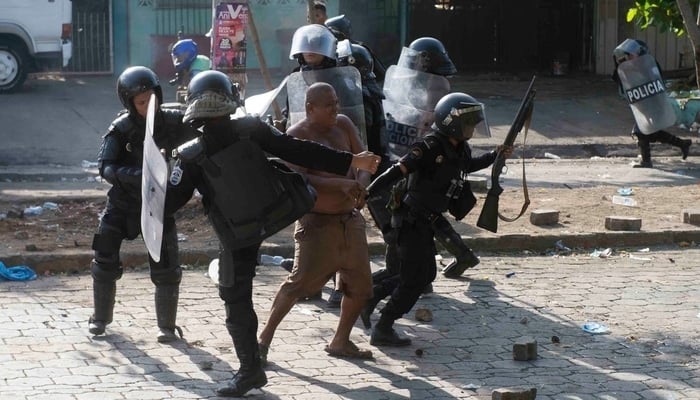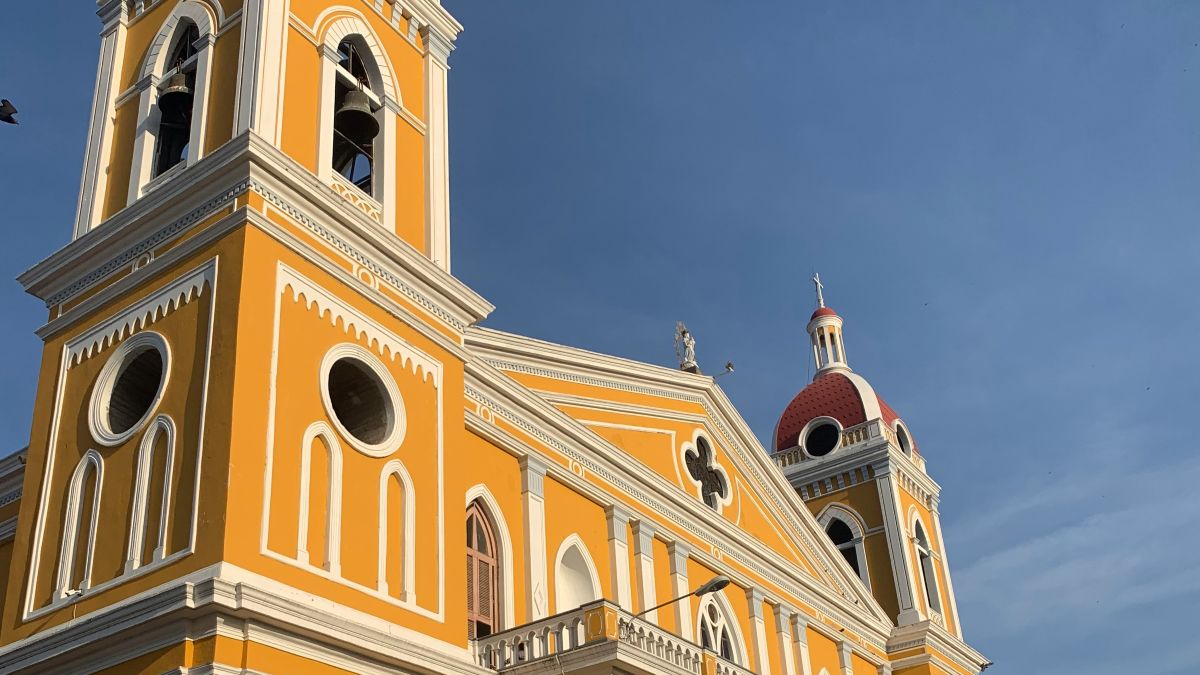Here at CentralAmerica.com, we try to deal with all aspects of life in Central America, country by country.
For example, our last Nicaragua article was about health insurance for expats. The one before was about the city of Leon and the one before that was about food.
Nicaragua has been good to this website. Heck, as of today, half our top ten most popular articles are about Nicaragua. We never expected that when we launched.
We want to continue publishing content like this, celebrating the wonderful country of Nicaragua with great stories and providing useful info to travelers, expats, and Nicaraguans alike.
But I don’t see how we can ignore the recent Nicaragua protests.
No way could we breeze through what’s taking place right now and publish a travel piece or whatever next time around like nothing happened. It would be weird, you know? Like how they airbrush history in North Korea or wherever.
So today I’m talking about the elephant in the room.

Anyone who knows or works with me knows I’m a Nicaragua enthusiast.
I live in Costa Rica but have been traveling to Nicaragua for years.
In 2011 I founded Nicaragua Vacations, Namu Travel’s Nicaragua division. I have been all over. Chinandega, Cosigüina, the Corn Islands, Bluefields, Esteli, you name it.
Nicaragua started for me as a country for visa runs from Costa Rica and cheap surf trips loaded with ice-cold Toñas. Then it grew into a place for longer breaks to decompress and later it became my job.
It’s weird to say, but Nicaragua has always made me feel “Central America” in a way that Costa Rica hasn’t.
I love Costa Rica, don’t get me wrong. But to me, Costa Rica has always been Costa Rica and Nicaragua has always been Central America.
I live and work in Costa Rica, married in Costa Rica, have built a life in Costa Rica. But somehow Nicaragua has always felt like my kinda place. Like I said, it’s weird and I can’t explain it.
The news coming out of Nicaragua since last Thursday has left me shocked.

From the comfort of home in Escazu, I’ve been following reports on social media of deaths and violence all over Nicaragua. At the time of writing at least 25 people are dead, including a TV reporter murdered in Bluefields on Facebook Live.
And the regime – yes, it’s a regime now – is taking TV and radio stations off air to muzzle free speech.
What started the violence was the announcement last Wednesday that President Daniel Ortega was overhauling the social security system.
From July, people would pay a little more to the INSS (Nicaragua’s social security agency). Also, state pensions would decrease five percent. So they would pay more in to receive less.
In all candor, some restructuring of the social security system was necessary. And these reforms were less radical than those the IMF had recommended for Nicaragua, including raising the retirement age.
Like all countries, Nicaragua needs to manage its finances. It’s not the first country to establish austerity measures since the economic crisis. Here in Costa Rica, we badly need to do the same.
But it’s the WAY Ortega did it that lit the fuse.
Over the years Nicaragua has turned into a one-party state ruled by decree by Ortega and his wife, vice-president Rosario Murillo.
They control all branches of government and dissent is unwelcome. We’re not talking a thumbscrew dictatorship like Assad in Syria or the Castros in Cuba, but dictatorships are still dictatorships. Even “soft” dictatorships.
I mean, unlike the Somoza dictatorship, ousted in the late 1970s, the Ortega dictatorship, as far as I know, doesn’t toss its enemies out of helicopters into the craters of smoking volcanoes, but still…
Just like the Somozas, the Ortegas have enriched themselves in much the same way. It’s hypocrisy at its worst and something had to give at some stage.
And what gave were the INSS reforms. That’s what transpires when multi-millionaires squeeze a few more dollars from working people.
Another component is Venezuela, which has been bankrolling Nicaragua for years.
But Venezuela has its own problems and is broke. So it was only a matter of time before Nicaragua, the poorest country in the region, felt the blowback from this.
When your benefactor runs out of money what can you do? So much for the Bolivarian revolution.

Now the Nicaragua protests have gone way beyond the INSS.
In fact, as of yesterday (Sunday, April 22) afternoon, Ortega has gone back on the INSS reforms that started the protests. But now people are protesting so much more.
First, they are protesting the violence carried out by the authorities and the Sandinista Youth, a loose-knit group of regime-supporting thugs the Ortegas have used for years to subdue opponents.
Then they are protesting the army on the streets. And the closure of TV stations, websites, and press censorship.
And also the Ortegas’ existence in Nicaraguan political life.
Ortega’s comments on Saturday where he blamed “the empire” (meaning the United States) for the violence, comprised the same, tired old rhetoric left-wing dictators use everywhere.
It’s all the gringos’ fault.
It’s all the Americans fault the Sandinista Youth beat up people exercising their right to expression and free speech. And so on.
Looking back over this present Ortega regime, I have to say I’ve been – gulp – impressed.
Well, not so much impressed as surprised. Hate to say it but it’s true. And I know I’m saying this from the point of view of a gringo in the tourism biz who doesn’t even live in Nicaragua. Not the best vantage point, I know.
But I remember the 2006 election when Ortega got back in. That weekend I was in Nicaragua, at El Club in Granada.
I remember the horror from gringos and Nicas alike – Granada has always been anti-Sandinista.
There was an almost end-of-the-world atmosphere and many people were talking about leaving. They were expecting the Sandinistas to confiscate property, nationalize everything, and adhere to the general Communist Party playbook.
But that didn’t materialize – at least not as much as people assumed it would.
Instead, Ortega turned out to be that modern brand of communist – a pro-business capitalist oligarch. It seemed he realized foreign investment was both good for his country and for his bank account.
Since then, tourism numbers have increased, some great new tourism ventures have gotten off the ground, and many thought life was on the up.

My point is, business didn’t stop because Ortega was back. It carried on and even flourished. The expats and the visitors kept coming too. He had – and still has, from many – support.
But over the years we watched as Ortega dismantled the Nicaraguan state, piece by piece.
We watched him change the constitution to keep running for the presidency, once, and then in perpetuity. No-one doubts Ortega plans to be president for life.
We watched him fill his courts up with cronies who disqualified opposition parties from running in municipal and national elections.
We watched him cozy up to Ahmadinejad in Iran and make his wife vice-president (for life).
Then we watched him sell his country out to a Chinese billionaire who promised a canal which would never materialize. We watched him pocket millions of dollars from that arrangement.
I guess we were all so relieved he wasn’t doing the stuff we feared he’d do we gave him a pass on the other stuff actually did do.
Then last week happened and President Ortega summoned up his inner Mubarak or Assad at last.
Social media coming out of Nicaragua has been awash with videos and photos of bloodied protesters, gunshot wounds, tear gas, beatings, and screams.
Nicaragua has worked so hard at trying to shed its reputation as a dangerous war zone. But what is transpiring has put the image of the country back years.
Ortega’s estranged stepdaughter, Zoilamérica Ortega Murillo, who lives in Costa Rica, is a critic of her parents’ rule in Nicaragua.
In an interview yesterday with the Costa Rican newspaper La Nacion, she said she understood the cause of the violence as more than the INSS.
To her, it was about the frustrations building up in Nicaragua as people realized taking to the streets was the only way anyone would take notice. She views these protests as a frantic cry for help.
“If people resort to taking to the streets, it’s for a reason”, she said.
It’s not at all surprising the hashtag surrounding these events is #SOSNicaragua. SOS (Save Our Souls) – again, a cry for help.

And so even if the INSS reforms are now void, it’s gone beyond that.
The genie is out of the bottle and Nicaragua’s own “Arab Spring” has started. The question is, will it be a Tunisia, an Egypt, or a Syria?
I’m thinking (hoping?) a Tunisia. These protests will dissipate at some point and Nicaragua will go back to being one of the safest countries in Central America. It still has so much to offer.
I hope our next Nicaragua article will be about something useful for expats and tourists. Or some anecdote about life in the Land of Lakes and Volcanoes that brings a smile to people’s faces.
And I hope the people of Nicaragua can find their freedom and live in a democratic country where their voice counts.
I wish them all the luck in the world.
Related:
- Nicaragua Update: Is Nicaragua Safe To Visit Right Now?
- A Quick Guide To The Players At The Nicaraguan National Dialogue
- Living In Nicaragua In An Age Of Insurrection
Recommended Reading:
James Dyde is the editor of CentralAmerica.com. He lives in Escazu, Costa Rica.




